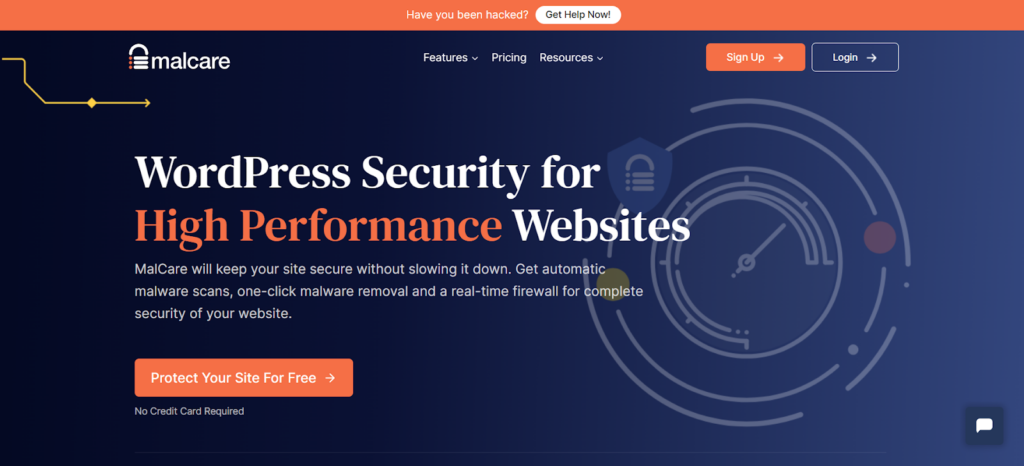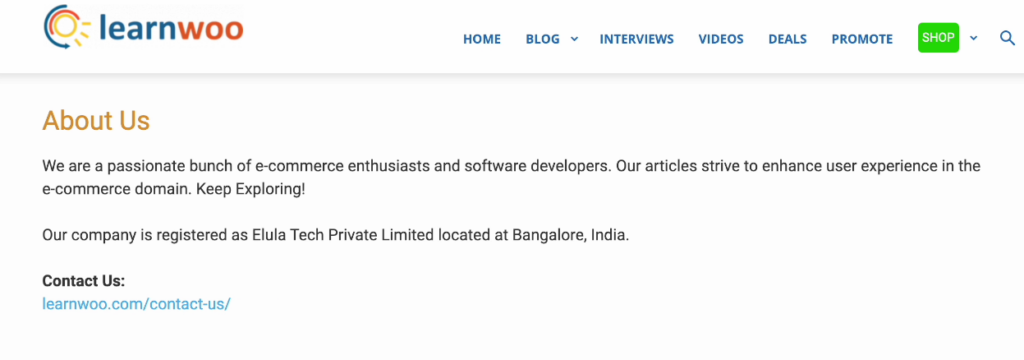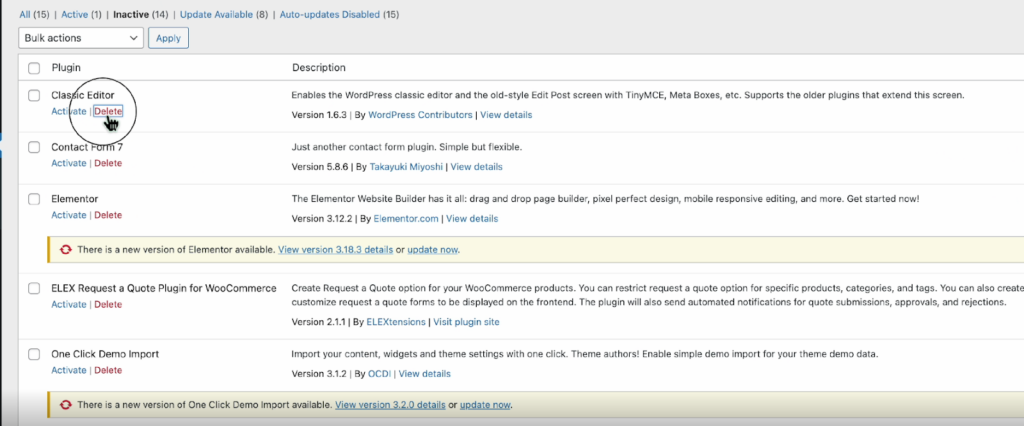In today’s digital world, a robust online presence is crucial for businesses and individuals alike. For the millions relying on WordPress to power their websites, ensuring a smooth and secure online experience is paramount. A WordPress website stands as a digital ambassador for businesses, bloggers, and creatives alike. Yet, to harness the full potential of this powerful platform, regular maintenance is not just recommended—it’s imperative.
In this comprehensive guide, we’ll explore the eight essential WordPress maintenance tasks that can transform your website from merely functional to a smooth-running, secure, and high-performance online presence.
1. Prioritize Your WordPress Site Security
Security is paramount when it comes to managing a WordPress site. Establish a robust security plan by utilizing a reliable security plugin such as MalCare. This tool not only enables you to schedule daily scans but also immediately alerts you to any suspicious activities. Its firewall protection adds an extra layer, thwarting potential threats like brute force attacks and XSS attacks. MalCare empowers you to maintain control over your site’s security, allowing for swift cleanup in the event of malware detection.


Benefits:
- Protection Against Threats: Utilizing a security plugin like MalCare ensures proactive scanning for potential threats, safeguarding your website against malware, brute force attacks, and other security vulnerabilities.
- Immediate Alerts: Receive real-time alerts about suspicious activities, enabling you to take swift action and prevent potential damage to your site and its reputation.
- Firewall Protection: MalCare’s firewall adds an extra layer of defense, blocking malicious attempts before they can harm your website, ensuring a secure online environment for both you and your visitors.
2. Regularly Backup Your Site
Imagine the horror of losing all your website data. Regular backups are your safety net. Consider using trustworthy backup plugins like Blogvault, UpdraftPlus, or Duplicator. Create multiple backups stored in different locations to ensure that, in the unfortunate event of a mishap, you can quickly restore your site without the need to start from scratch.


Benefits:
- Data Recovery: In the event of data loss due to a technical glitch, hacking, or any other unforeseen circumstance, regular backups ensure that you can quickly restore your website to a previous state without significant downtime.
- Business Continuity: Backups serve as a crucial part of your business continuity plan, minimizing the impact of unexpected events and ensuring uninterrupted service for your users.
- Peace of Mind: Knowing that your website’s data is securely backed up in multiple locations provides peace of mind, allowing you to focus on other aspects of your online presence.
3. Optimize Your WordPress Site Performance
Slow-loading websites drive visitors away. Thankfully, there are tools and plugins available to optimize your site’s performance:
- WP Rocket: A premium caching plugin that enhances website speed through page caching, browser caching, and CSS/JavaScript/HTML minification.


- Smush: An image optimization plugin that automatically compresses and resizes images, ensuring faster loading times without compromising quality.


- W3 Total Cache: A comprehensive caching plugin that optimizes website performance by caching pages, minimizing CSS and JavaScript, and integrating with content delivery networks (CDNs).


- Jetpack: Developed by Automattic, Jetpack offers a suite of tools for WordPress websites, including performance enhancements, image optimization, downtime monitoring, and security features.


Benefits:
- Improved User Experience: A faster website enhances user experience, reducing bounce rates and keeping visitors engaged with your content.
- Search Engine Ranking: Google considers page speed as a ranking factor. Optimizing your site’s performance positively influences its search engine ranking, potentially increasing organic traffic.
- Competitive Advantage: A speedy website gives you a competitive edge, as users are more likely to stay on your site rather than navigate away due to slow loading times.
4. Keep WordPress Core, Themes, and Plugins Updated
Regular updates are crucial for maintaining the security and performance of your WordPress site. Start by updating the WordPress core, themes, and plugins.






Benefits:
- Enhanced Security: Regular updates patch vulnerabilities in the software, making it more resistant to security threats and reducing the risk of exploitation by malicious actors.
- Compatibility: Keeping your WordPress core, themes, and plugins updated ensures compatibility with the latest technologies, preventing potential conflicts that could lead to functionality issues.
- Access to New Features: Updates often come with new features and improvements, allowing you to take advantage of the latest advancements in web development.
5. Review Your Site SEO
Optimizing your site for search engines is essential for attracting organic traffic. Utilize SEO plugins like Rank Math SEO to review and enhance your site’s SEO. This tool simplifies the process of optimizing both new and existing content by providing insights into meta descriptions, tags, titles, and overall SEO scores for your posts and pages.


Benefits:
- Increased Visibility: Optimizing your site for search engines improves its visibility in search results, attracting more organic traffic and potential customers.
- User-Friendly Content: SEO plugins help you create content that is not only search engine-friendly but also user-friendly, improving the overall quality of your website.
- Better Analytics: Improved SEO practices contribute to better analytics insights, allowing you to understand your audience better and tailor your content accordingly.
6. Review Website Passwords
Passwords are a significant vulnerability in website security. Strengthen your defenses by following these password practices:
- Use a combination of capital and lowercase letters, numbers, symbols, and punctuation.
- Opt for lengthy passwords that are difficult to guess.
- Consider using a password manager to generate and securely store complex passwords.
- Regularly update your passwords, avoiding repetition across multiple accounts.
Benefits:
- Enhanced Security: Strong, unique passwords are a frontline defense against unauthorized access and potential breaches, reducing the risk of compromised user accounts.
- Password Management: Using a password manager streamlines the process of creating and managing complex passwords, ensuring both security and convenience.
- Prevention of Credential Stuffing: Regularly updating passwords and avoiding repetition across accounts helps prevent credential stuffing attacks, where attackers use known passwords to gain unauthorized access.
7. Update Site Information
As your business evolves, so should your website. Keep your visitors informed by regularly updating essential information, including the About Us page, contact details, and any significant changes to your products or services. This ensures that your website remains a reliable and up-to-date source of information for your audience.


Benefits:
- Accurate Representation: Regularly updating your site information, including contact details and product or service changes, ensures that your website accurately reflects your current business status.
- Customer Trust: An up-to-date website instills confidence in your audience, showing that you are actively managing and communicating relevant information about your business.
- SEO Impact: Search engines value fresh and relevant content. Regular updates contribute to improved SEO, potentially boosting your site’s visibility in search results.
8. Delete Inactive Themes and Plugins
Inactive themes and plugins not only pose security risks but also consume valuable space. Streamline your website by deleting unused themes and plugins. Navigate to the WordPress dashboard, go to the Themes or Plugins section, identify the inactive ones, and hit the delete button. This simple yet effective step helps maintain a lean, secure, and efficient website.




Benefits:
- Reduced Security Risks: Inactive themes and plugins may contain vulnerabilities. Deleting them minimizes the potential security risks associated with unused or outdated code.
- Server Resource Optimization: Removing unnecessary themes and plugins frees up server resources, contributing to a faster and more efficient website.
- Easier Maintenance: A lean website is easier to manage. Deleting unused themes and plugins simplifies the maintenance process, making it less prone to errors and complications.
Conclusion
In the digital era, where first impressions matter, a well-maintained WordPress website is your ticket to online success. By incorporating these eight essential maintenance tasks into your routine, you’re not only safeguarding your site but also providing a seamless and enjoyable experience for your visitors.
The digital landscape is dynamic, and a proactive approach to WordPress maintenance ensures that your website remains a beacon of reliability and innovation. Embrace these tasks, make them a part of your digital routine, and watch as your WordPress site transforms into a smooth-running powerhouse on the web.
If you are someone who is more comfortable with video content, then here is a detailed video on ‘8 Essential WordPress Maintenance Tasks for a Smooth-Running Website.’











